In this post, I’ve asked ecological consultant Josh Butterworth to answer the question: What reptiles live in the UK? The answer might surprise you…
Last updated on December 12th, 2022 at 09:42 am
Herping in the UK?
It is easy to fall into the ‘grass is greener’ mindset when it comes to herping in the British Isles. People often overlook British reptiles and instead search for more striking examples abroad. In fact, many native Brits are unaware of exactly what reptiles live in the UK.
It may therefore surprise you to learn that the UK has nine resident terrestrial reptile species, the native of which are all afforded legal protection from being killed, injured, or traded by the Wildlife & Countryside Act 1981. We also have two species of sea turtle that visit our shores.
This article takes a closer look at our native and established non-native reptile species.
1. The Smooth Snake (Coronella austriaca)
As a heathland specialist, the Smooth Snake is a rare species that occurs in similar habitats to the Sand Lizard. It occupies a different niche to our other snakes, being a diurnal reptile specialist but one which remains under cover much more than the Grass Snake.
The males are brown, while females are grey. Being ovoviviparous, they lay eggs inside of the female that hatch within the body. The Smooth Snake is the UK’s only native constrictor but is not particularly good at it!
As a rarity, Smooth Snakes may be hard to observe and can go unnoticed for years.

This photo of a Smooth Snake constricting a lizard was kindly provided by @michaels_herping. Michael is a wildlife photographer form the Czech Republic who specialises in reptiles and amphibians. Many of his photographs capture herps engaging in natural behaviours. This makes a visit to his Instagram well worth your time!
2. The European Adder (Vipera berus)
Like the Common Lizard, the Adder is a very cold-tolerant species, which has even been seen basking next to snow. The Adder is the UK’s only venomous snake, though it doesn’t have quite enough venom to do much damage in most cases. That said, it’s still one to be cautious of when herping in its preferred habitats, heathlands.
The species was once very abundant but is now in decline across most of UK due to land-use changes, which often lead to habitat degradation.
Furthermore, Adders are a very shy species. According to some sources, woodland cattle grazing is now a major cause for their decline in the UK. This is mainly because the cattle disturb them during breeding.
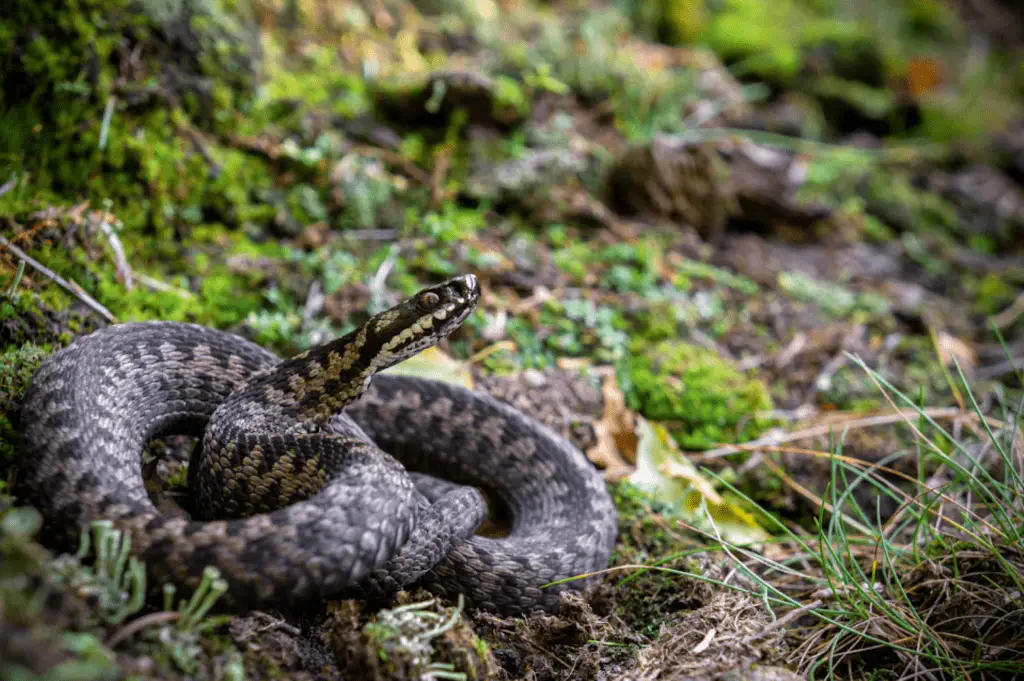
3. The Slow Worm (Anguis fragilis)
The Slow Worm is a common visitor to gardens but is easy to miss. Rarely basking fully exposed, you can find them under log-piles, compost heaps and waste materials (e.g. corrugated tin). They choose to hide under items heated by the sun, which in turn creates a microclimate underneath with high levels of humidity.
Slow Worms are a useful tenant to host in your compost heaps as they feed on a variety of invertebrate species, including snails and slugs. Though Slow Worms may be mistaken for snakes, they are in-fact a legless lizard which has evolved convergently with them.
As a lizard, Slow Worms have the ability to shed their tail when threatened by predators. In the UK these usually consist of snakes, birds, cats and foxes.
The species is widespread throughout mainland Britain and is legally protected from being killed, injured, or traded by the Wildlife & Countryside Act 1981.
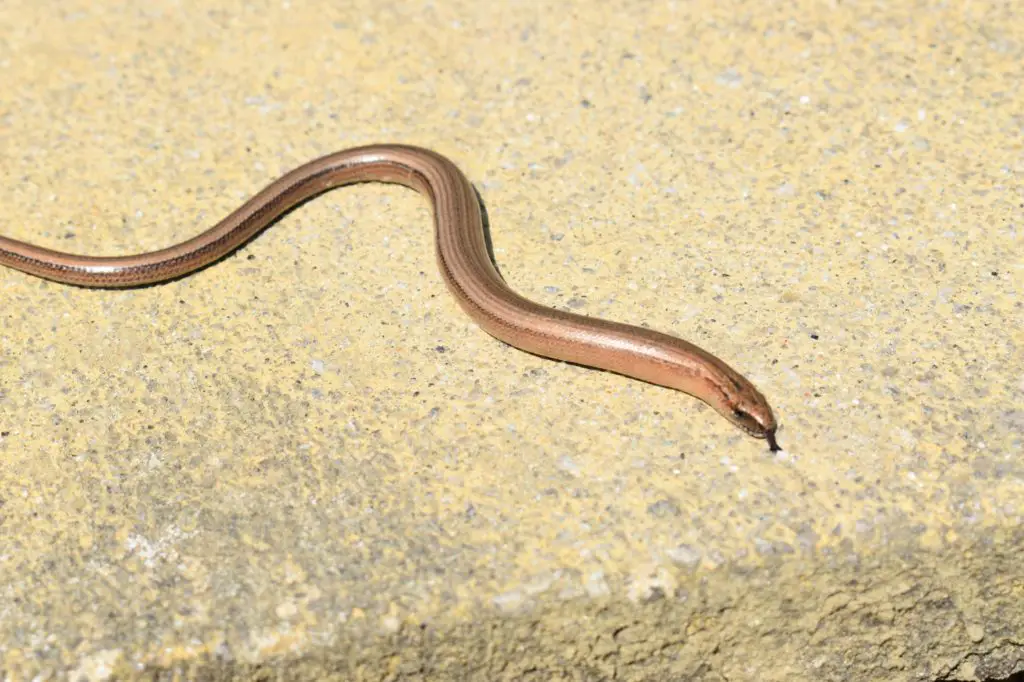
4. The Common Lizard (Zootoca vivipara)
Common Lizards are, as their name suggests, common and widespread around the UK. Overall, the species is massively successful, being found from Ireland to Sakhalin island in the Russian far east. To the north, they range further into the arctic than any other reptile.
Unlike many other lizard species, most populations of Common Lizard are viviparous as the Latin name suggests, giving birth to live young rather than laying eggs. This makes them ideal to study to help understand evolutionary transitions to viviparity from oviparity.
It also gives them their other vernacular: the Viviparous Lizard, though this isn’t as widely used as the name ‘Common Lizard.’ Common Lizards are easy to spot on fence posts, rocky banks, railway sleepers and walls as they openly bask in the sunshine.
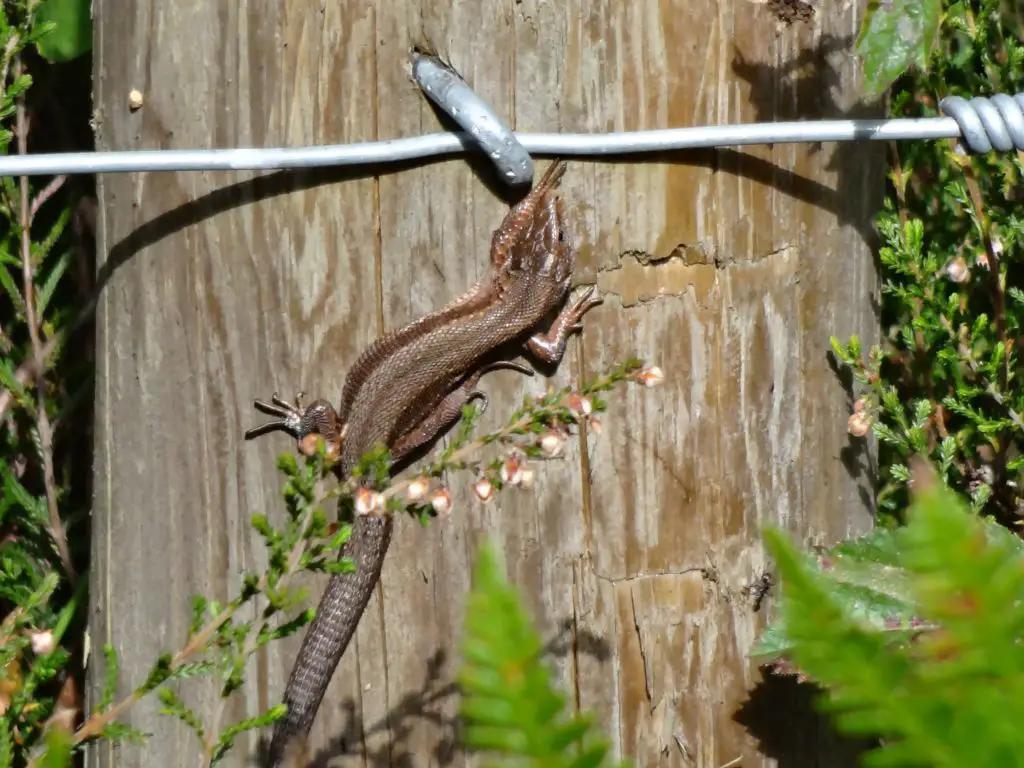
5. The Sand Lizard (Lacerta agilis)
This is one of the rarer UK species, found only in a few areas with widespread heathland, acid grassland and sand dunes. Their rarity is rather unsurprising as they lay eggs (oviparous), which need consistent warmth. They also require nice open areas for basking.
Sand Lizards are a beautiful species with green males and brown females, growing far bigger and appearing stockier than the Common Lizard. They are also highly protected, not only by the Wildlife & Countryside Act 1981, but also by European legislation.
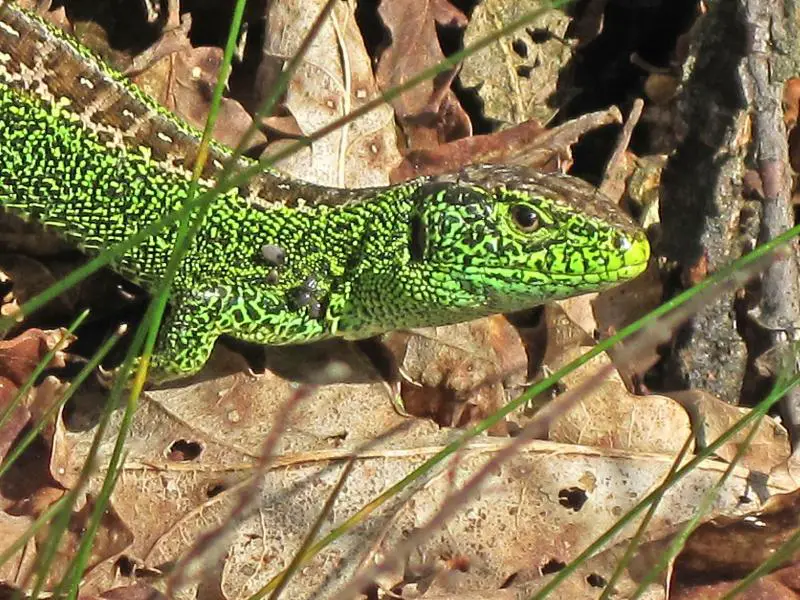
6. The Barred Grass Snake (Natrix helvetica)
The Barred Grass Snake, or simply Grass Snake (in the UK), is Britain’s largest snake. In most areas, it is also the most common. They have an elaborate defensive display including musking – an unpleasant smell many herpers will be all too familiar with – as well as feigning death.
Grass Snakes frequent waterbodies and can often observed along the banks of ponds or slow-moving rivers. This is because their preferred prey items are frogs and toads. Notwithstanding, they will also feed on fish, birds, and small mammals.
Until very recently, the Barred Grass Snake was included within the Common Grass Snake species classification Natrix natrix, however in August 2017 genetic analysis gave it full species status, under the latin name Natrix helvetica.

7. The Leatherback Turtle (Dermochelys coriacea)
Out of 5 species of turtle ever recorded in UK waters, the only one you’re likely to see is the Leatherback. This turtle is one of the largest reptiles on the planet – heavier than Alligators and American crocodiles.
A unique member of its family, Leatherbacks have a tolerance for diving in cold waters. The best time to see the leatherback is in the peak of summer, when they can often be seen along western UK coasts.
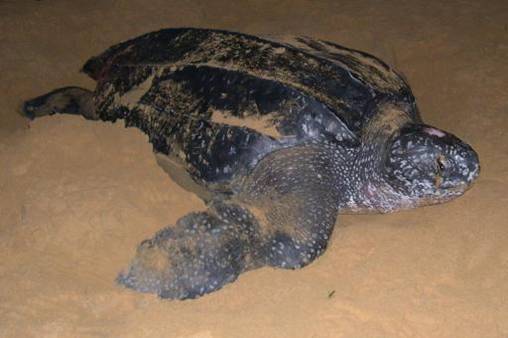
8. The Loggerhead Turtle (Caretta caretta)
This beautiful sea turtle is only an occasional visitor to UK waters. Though some people consider them a native species, it is debateable whether they really are or whether they get washed in by Atlantic storms.
Whatever the case, you can occasionally spot adults in UK waters during the summer months.
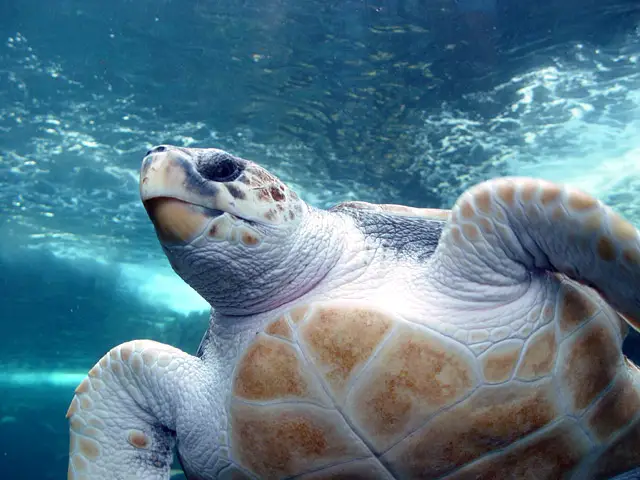
9. The Aesculapian Snake (Zamenis longissimus)
The Aesculapian Snake was first introduced to the UK in the 1970s as an escapee from a zoo near Conwy in North Wales. Since the first introduction, two more populations have been recorded, first in London, England and more recently in Bridgend, Wales.
The main prey source for the Aesculapian snake are rodents – enabling them to thrive on rat populations in London. Nonetheless, the scarcity of egg-laying sites in the city limits their population growth.
As a result, the most stable population is near Conwy. Regularly growing between 4 and 5 ft long this species is relatively easy to miss as it is semi-arboreal. The Aesculapian Snake prefers densely vegetated areas, so keep an eye out for basking individuals in the top of dense bushes and scrub.
To date, no harmful effects have been observed from the Aesculapian Snake’s presence.
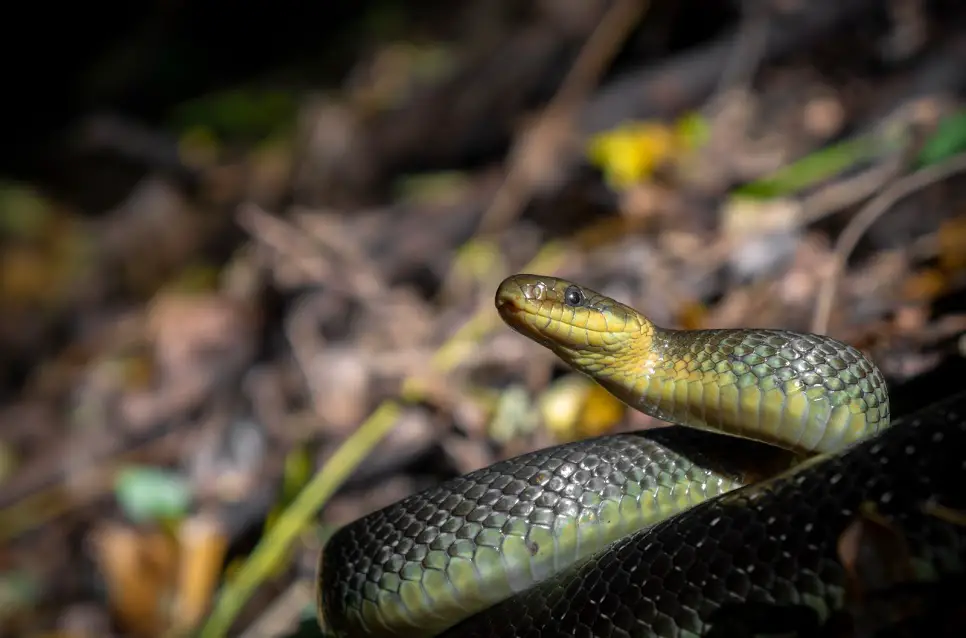
10. The Wall Lizard (Podarcis muralis)
The Wall Lizard is a non-native reptile in southern mainland UK but is naturally occurring in the Channel Islands. As the name suggests, it favours houses and man-made structures where it basks in the sunlight.
Two forms are present in the UK. The brown-backed form, which originated in Western Europe and the green-backed form, which originated in Italy. This species is easily confused with our native Common Lizard however some key distinctions include its high-set eyes and rounded snout.
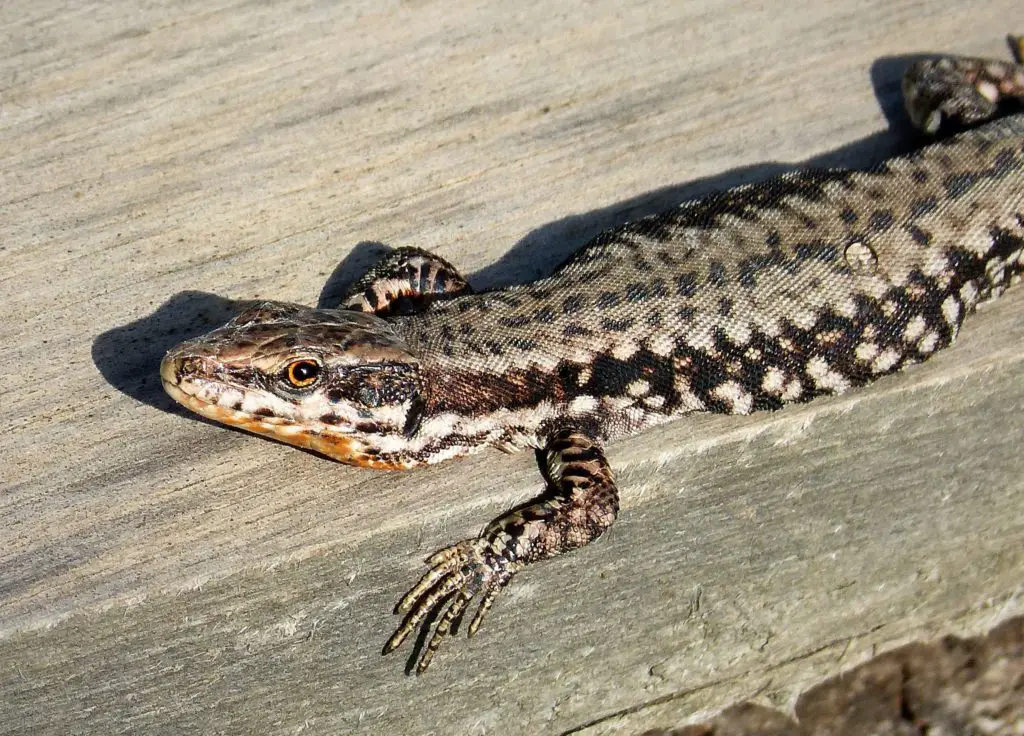
11. The Western Green Lizard (Lacerta bilineata)
Another native Channel Islander, the Western Green Lizard is an extremely localised species in mainland UK. In fact, it can only be found in a few places in southern England where it has been introduced.
The best place to see this beautiful species is in dense vegetation, woodland, heathland, and scrub with open areas for basking.

In conclusion
UK reptiles are a diverse group, despite the low total number of species, and low number of native species. Given our northern latitude and less than herp-friendly climate, it’s definitely surprising that we can count a constricting snake and sea turtle amongst our local species.
I hope that it is now clear that each species of UK reptile possesses interesting, unique characteristics that make it worth observing.
My advice is to not dismiss the UK as a herping destination. There’s so much to see and learn in the British countryside that it would be a shame to pass it up! Just make sure to treat it with respect, particularly when observing rare species such as the Sand Lizard and Smooth Snake.
We hope you’ve enjoyed this guest post by Josh! Working as an ecological consultant in Somerset, England, Josh has regular field experience with reptiles, and a good working knowledge of the habits and population status of each UK species.
If you would like more information on how to find reptiles, check out Tips for Herping. Or, if you’d like more information on the legal protection afforded to British reptiles, I suggest visiting this page: Law on Capturing Keeping and Disturbing Native UK Reptiles and other Herps
*Ballpythonbreeder.co.uk does NOT recommend disturbing Adders in the UK for any reason! This species is now in sharp decline across the country. Any photos of Adders on this site are of specimens from more robust populations abroad.
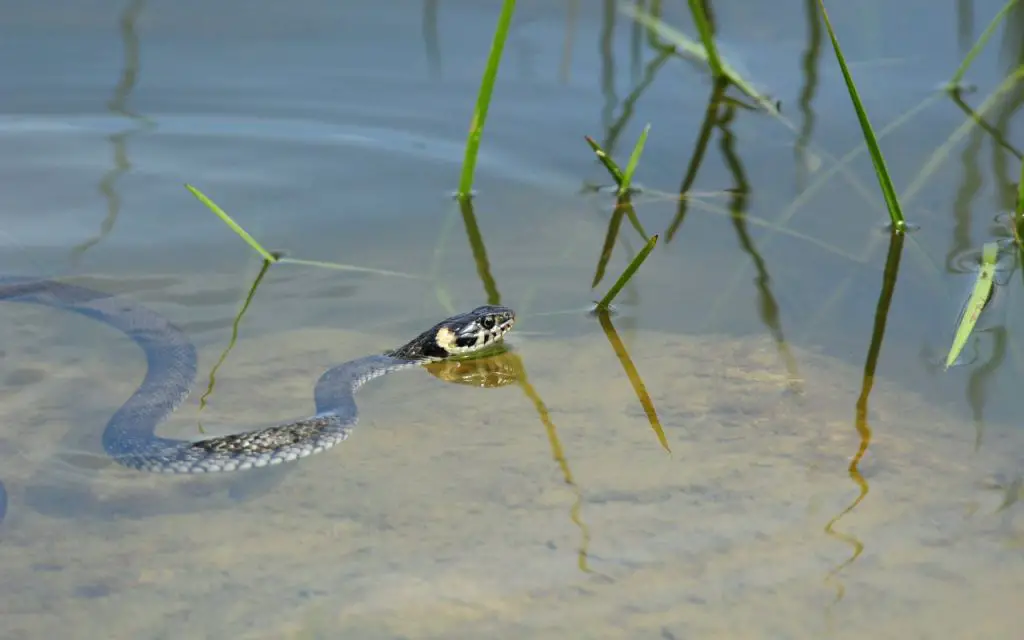
Key points to remember about reptiles in the UK (from the editor)
- In a country as small as the UK, our native reptiles aren’t limited to nature reserves. Because of how fragmented their natural environment has become, they regularly occur in residential gardens and ponds. Always keep this in mind when gardening or mowing – your backyard could be a haven for one or more of our native species of reptiles.
- Non-native species have colonised parts of England, but so far don’t seem to be doing any harm. If unsure of the identification of a snake or lizard, it’s best to simply leave it free.
- Be wary of disturbing Adders during the breeding season – even for photography. They won’t harm you, but growing evidence is suggesting that any kind of disturbance during this time can put them off mating. This adds pressure to a shy species of snake, which is already becoming increasingly rare.
- Smooth Snakes are amongst the UK’s rarest reptiles, and disturbing or harming them can lead to hefty fines.

